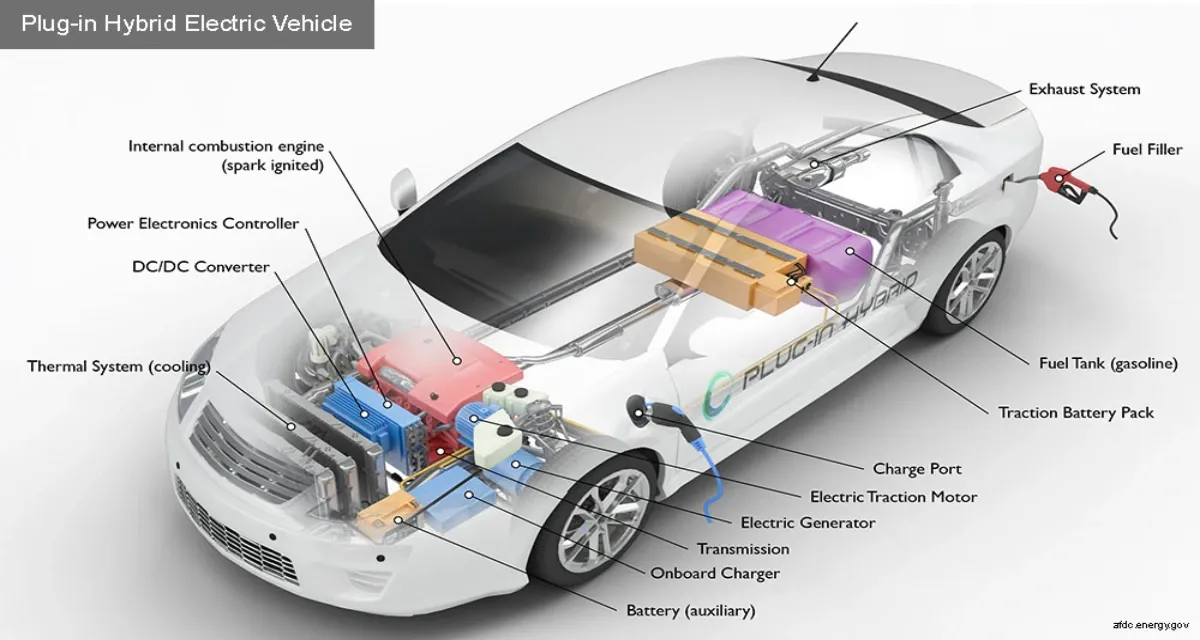

Buying a hybrid car has now become quite popular in India and they have been selling very fast of late. Various auto giants such as Maruti Suzuki, Toyota and Honda have launched numerous hybrid models that are incorporated majorly with a mixture of mild and strong hybrid systems.
However, another category of vehicles, plug-in hybrid vehicles or PHEVs, are making waves, especially in the premium segment. This article is a discussion of PHEVs, how they function, the pros of this technology, and how they stack up relative to other hybrid technologies.
Mild and strong hybrids differ from plug-in hybrids chiefly in that the latter can be recharged. While the mild hybrids and strong hybrids rely specifically on the boot carried on the car to recharge the battery packs, PHEVs can be recharged through an external source. This feature makes PHEVs have a longer charge-only electric range and are efficient, especially in urban areas where people make short trips.
PHEVs function similarly to strong hybrids like the Maruti Grand Vitara and Toyota Innova Hycross. They use a larger battery pack and an electric motor setup to assist the engine, enhancing fuel efficiency. The larger battery pack in PHEVs enables them to travel longer distances in electric-only mode compared to strong hybrids, thus reducing fuel consumption and emissions during city driving.
One of the significant distinctions between PHEVs and traditional strong hybrids is their battery charging method. In strong hybrids, if the battery charge depletes, the engine acts as a generator to recharge it.
This continuous recharging ensures a stable mileage over extended drives. However, PHEVs, with their larger battery packs, cannot rely solely on the engine for recharging. While the engine can provide some charge, it is insufficient to keep the vehicle running efficiently once the battery is depleted. Hence, PHEVs need to be plugged into a power source to recharge fully.
For instance, the BMW XM, a plug-in hybrid, claims a fuel efficiency of 61.9 kmpl and a pure electric range of up to 88 km. This impressive figure highlights the efficiency of PHEVs when their battery is charged. However, without regular recharging from an external source, their fuel efficiency can drop significantly.
Strong hybrids, such as the Maruti Grand Vitara and Toyota Innova Hycross, offer consistent mileage figures, often exceeding 20 kmpl. This consistency stems from their ability to continuously recharge the battery using the engine. On the other hand, PHEVs like the BMW XM can achieve extraordinary fuel efficiency figures when their battery is fully charged. However, as the battery depletes, the reliance on the engine increases, leading to fluctuating mileage.
During long drives, this distinction becomes more apparent. A strong hybrid maintains its mileage since the engine continuously recharges the battery. Conversely, the mileage of a PHEV can vary based on the state of charge of the battery. If the battery is not recharged, the vehicle's fuel efficiency will diminish over time.
PHEVs come with a higher price tag due to their complex technology, larger battery packs, and more powerful electric motors. The BMW XM, for instance, is priced at Rs 2.60 crore (ex-showroom) and exceeds Rs 3 crore on-road. This high cost makes PHEVs less accessible compared to traditional hybrids. Previous PHEVs in India have also been priced in the premium segment, limiting their widespread adoption.
Despite their high prices, PHEVs offer significant benefits, including reduced emissions and better fuel efficiency in urban environments. The advanced technology and performance capabilities of PHEVs justify their premium pricing to some extent, but their affordability remains a barrier for many potential buyers.
As the Indian market continues to evolve, the presence of strong and plug-in hybrids is increasing. While PHEVs are currently limited due to their high costs, the demand for cleaner and more efficient vehicles is likely to drive future growth. The technology offers a compelling blend of electric and traditional propulsion, catering to a market that seeks high performance and eco-friendliness.
As automotive technology advances, the potential for PHEVs to become more accessible and widespread in India grows, promising a greener and more efficient future for transportation.
Also Read: